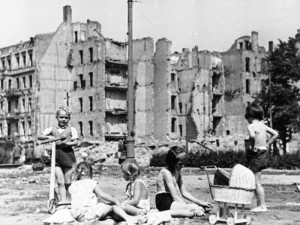I can only imagine how Berliners that lost loved ones felt during this time. Some people were given their loved ones personal items, however, the majority of family members received nothing at all. In addition, family members had to wait to hear of the loved ones demise because the Nazis limited the number of death notices to ten per day so as to not harm public morale. This was an interesting perspective of World War II that I have often not thought about. Usually when I learned about the war, I was taught about the Holocaust and the experiences on the home front for Great Britain and France, but not so much about Germany. The experiences of Berliners are often times left out of the historical narrative. I found this reading to be particularly refreshing.


It was interesting to witness how the evacuation of children shaped the culture of the time – even for infants. Some of the most quintessential children British novels that emerged out of the rubles of World War 2 dealt with these issues. C.S. Lewis’ 1950 book The Lion, the Witch, and the Wardrobe began with the Penvensie kids being evacuated out of London into the countryside. J.M. Barrie’s classic play/book Peter Pan in Kensington Gardens was adapted to fit this scenario in London’s theater – it would begin with Mrs. Darling consoling her children during an air raid.
What Moorhouse described as “an example of mobilization of every sector of society, in which the Nazi regime specialized” (p. 200) can be witnessed in this example of the ‘total war’ policy that was ensured during World War 2.
Clip of bombing and evacuation from the 2005 motion picture The Chronicles of Narnia: The Lion, the Witch and the Wardrobe
https://www.youtube.com/watch?v=KDjS-6ykxLg